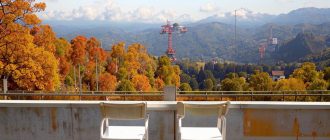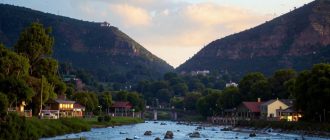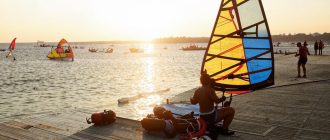
President of Pro-Vision, author of the Vinogradov.story community
There are places in the world that require special treatment. Being of exceptional cultural or natural value to mankind, they are protected by UNESCO, a special UN unit dealing with education, science and culture. But nevertheless they are open for travelers and tourists. In Russia, there are 30 objects from the UNESCO list at once – I will tell you about the most interesting and impressive of them, which I know firsthand, below.
Lake Baikal
The deepest freshwater lake in the world stores about 20% of drinking water, but this is not what attracts tourists. Visitors come to Baikal in search of protected nature, to get acquainted with unique local culture and to join “places of power” in the heart of continental Asia.
In summer, the legendary lake will welcome travelers with a ferry to Olkhon, pilgrimage to Shamanka and a walk along the Circum-Baikal railroad, recognized as a miracle of engineering thought. And in winter it will invite you to touch a hundred shades of Baikal ice and ride to ice caves on “Khivus”. And lastly, to try Buryat buusa, following the rule of “three O’s”: take a bite from the top, drink the liquid – and be stunned.

Baikal
Church of the Ascension of the Lord in Kolomenskoye, Moscow
The first stone tent church in Russia, the Church of the Ascension of the Lord was erected in honor of the birth of Ivan IV – the future Ivan the Terrible. It is hard to believe, but its history is about 500 years, many of which were not peaceful at all.
Nevertheless, the temple has survived and continues to amaze with its organic interweaving of typical Russian kokoshniks and shirinoks with “Western” pilasters, bypass gallery and pointed vimpergami. Against the background of the surrounding landscape, the white-stone Church of the Ascension of the Lord seems weightless and as if aspiring upwards – to the place where there is no place for worldly vanity and extraneous thoughts.

Church of the Ascension in Kolomenskoye
Golden Mountains of Altai
Under this poetic name, three parts of the Altai Mountains are included in the UNESCO heritage list: the Altai Reserve and Lake Teletskoye, the Katunsky Reserve and Mount Belukha, as well as the Ukok Plateau. But it is better not to divide Altai into some formal zones, but to perceive it as a whole and unique – with fragrant herbs, the changing mood of the Katun and Blue Lakes, which appear only in the cold season, snowy peaks and alpine meadows. After all, Altai translates from Turkic languages as “golden mountains”, and it is worth enjoying a trip to these places to the fullest.

Altai Mountains
Volcanoes of Kamchatka
It was more accurate to say “geysers and volcanoes” – in Kamchatka one without the other is simply impossible. There are more than 300 volcanoes on the peninsula, of which about 30 are active, including the legendary Kliuchevskaya Sopka, the highest active volcano in Eurasia. It is impossible to count the number of geysers, and it is not worth it – it is better to enjoy the natural power from afar, which is both mesmerizing and frightening at the same time.

Kliuchevskaya Sopka
Kazan Kremlin and Sviyazhsk, Tatarstan
Formally, the Kremlin in Kazan and the island-grad Sviyazhsk 30 km away are two different UNESCO sites, but thanks to their geographical proximity they can easily be combined in one trip. Start with the Kremlin – monumental, impregnable, but at the same time very “alive” and touristy, with views of the walls and towers, domes of the Annunciation Cathedral and Kul Sharif minarets, as well as the obligatory photo with the falling Suyumbike.
And continue with a water trip to Sviyazhsk – to the ancient monasteries and manors of the century before last. And do not deny yourself the pleasure to try something from the national cuisine. I recommend peremyach (meat pie), which, by the way, is also on the UNESCO cultural heritage list, but it is already intangible.

Kazan Kremlin






